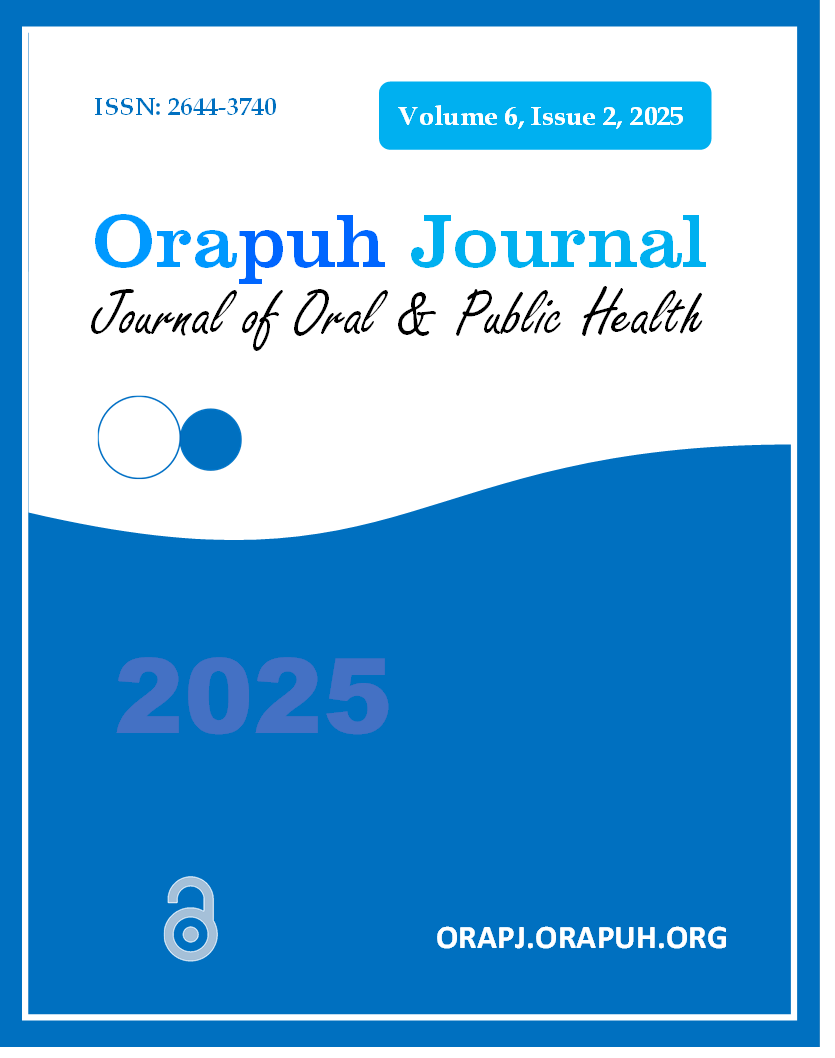Abstract
Introduction
Family planning is a cornerstone of women's reproductive health and plays a pivotal role in the socio-economic development of communities. The adoption of modern contraceptive methods (MCM) is critical for improving reproductive health and ensuring effective birth control. Despite its importance, the adoption of MCM remains limited in Kisangani City, Democratic Republic of the Congo, due to a range of sociodemographic, sociocultural, and socioeconomic factors.
Purpose
This study aims to investigate the determinants of non-use of modern contraceptive methods among multiparous women in Kisangani, with a focus on understanding the barriers to adoption. By highlighting these determinants, the study seeks to contribute to global efforts to improve reproductive health interventions.
Methods
Data were collected between February and July 2024 from various health areas in the urban and rural communities of Kisangani. A sample of 811 women participated in the study. The data were entered and analyzed using SPSS software (version 21.0). Logistic regression analysis was employed to identify the factors significantly associated with the non-use of modern contraceptive methods. Odds ratios (OR) with p-values were calculated to determine the strength and significance of these associations.
Results
The analysis revealed that several factors significantly influenced the non-use of modern contraceptive methods. Women belonging to non-Christian religions were less likely to use MCM (OR = 0.46, p = 0.00). A low level of education, either by the woman or her partner, was strongly associated with a higher likelihood of non-use (OR = 2.66 and 2.40, respectively, p = 0.00). Unemployed women were significantly more likely not to use MCM (OR = 2.37, p = 0.00), and unemployed spouses also influenced non-use (OR = 2.17, p = 0.00).
Conclusion
The study reveals socio-demographic, cultural, and economic barriers hindering the use of modern contraceptives in Kisangani, particularly among women with low levels of education, those who are economically disadvantaged, and those belonging to certain religious groups. It recommends targeted strategies (education, economic empowerment, and tailored campaigns) to reduce unwanted pregnancies and improve women's reproductive health.
References
Ajayi, A. I., Adeniyi, O. V., & Akpan, W. (2018). Use of traditional and modern contraceptives among childbearing women: Findings from a mixed methods study in two southwestern Nigerian states. BMC Public Health, 18(1), 604. https://doi.org/10.1186/s12889-018-5522-6
Bongaarts, J., & Hardee, K. (2019). Trends in contraceptive prevalence in Sub-Saharan Africa: The roles of family planning programs and education. African Journal of Reproductive Health, 23(3), 96–105. https://doi.org/10.29063/ajrh2019/v23i3.9
Cleland, J., Conde-Agudelo, A., Peterson, H., Ross, J., & Tsui, A. (2012). Contraception et santé. The Lancet, 380(9837), 149–156. https://doi.org/10.1016/S0140-6736(12)60609-6
EDS-RDC. (2018). Enquête démographique et de santé en République démocratique du Congo 2017-2018 [Demographic and Health Survey in the Democratic Republic of the Congo 2017-2018]. Kinshasa: Ministère de la Santé de la RDC.
Hossain, S., Akter, T., Mohsin, M., Islam, M. M., Chowdhury, P. B., & Khudri, M. M. (2024). Contraceptive uses among married women in Bangladesh: A systematic review and meta-analyses. Journal of Health, Population and Nutrition, 43(1), 10. https://doi.org/10.1186/s41043-024-00502-w
Hounton, S., Barros, A. J. D., Amouzou, A., Shiferaw, S., Maïga, A., & Friedman, H. S. (2015). Tendances et modèles d'utilisation des contraceptifs dans le monde : L'importance de lutter contre les inégalités. Global Health Action, 8(1), 29760. https://doi.org/10.3402/gha.v8.29760
Kassim, M., & Ndumbaro, F. (2022). Factors affecting family planning literacy among women of childbearing age in the rural Lake zone, Tanzania. BMC Public Health, 22(1), 646. https://doi.org/10.1186/s12889-022-13103-1. Erratum in: BMC Public Health, 22(1), 874. https://doi.org/10.1186/s12889-022-13258-x
Manet, H., Doucet, M. H., Bangoura, C., Dioubaté, N., El Ayadi, A. M., Sidibé, S., Millimouno, T. M., & Delamou, A. (2023). Factors facilitating the use of contraceptive methods among urban adolescents and youth in Guinea: A qualitative study. Reproductive Health, 20(1), 89. https://doi.org/10.1186/s12978-023-01621-z
Mpunga, D., Lumbila, T., & Ndongala, J. (2020). Services de planification familiale et besoins non satisfaits dans les zones urbaines de la République démocratique du Congo. Études sur la population africaine, 34(1), 42–54.
Mulugeta, S. S., Fenta, S. M., Fentaw, K. D., & Biresaw, H. B. (2022). Factors associated with non-use of modern contraceptives among sexually active women in Ethiopia: A multi-level mixed effect analysis of the 2016 Ethiopian Demographic and Health Survey. Arch Public Health, 80(1), 163. https://doi.org/10.1186/s13690-022-00922-2
Olakunde, B. O., Pharr, J. R., Adeyinka, D. A., Chien, L. C., Benfield, R. D., & Sy, F. S. (2022). Spatial variations in family planning demand to limit childbearing and the demand satisfied with modern methods in sub-Saharan Africa. Reproductive Health, 19(1), 144. https://doi.org/10.1186/s12978-022-01451-5
Organisation mondiale de la Santé (OMS). (2021). Planification familiale/Méthodes de contraception [Family planning/Contraceptive methods]. World Health Organization. Consulté le 26 novembre 2024, https://www.who.int/fr/news-room/fact-sheets/detail/family-planning-contraception
Phiri, M., Lemba, M., Shasha, L., Sikaluzwe, M., & Simona, S. (2023). Perceived ideal number of children among adolescent girls in sub-Saharan Africa: Does exposure to family planning messages matter? BMC Women's Health, 23(1), 479. https://doi.org/10.1186/s12905-023-02609-4
Tchokossa, M., Ngoy, M., & Masengo, L. (2019). Obstacles socioculturels à l'utilisation de la contraception en République démocratique du Congo : Une étude exploratoire. Revue de santé reproductive, 16(4), 25–30.
UNFPA. (2022). État de la population mondiale 2022 : Voir l’invisible – Plaidoyer pour une action face à la crise négligée des grossesses non désirées. New York: Fonds des Nations Unies pour la population.
Woto, L. S., Manenga, M. J., Ngalula, K. R., Nkongolo, K. M., Ngbolua, K. N., Mukandu, B. B. L., & Omanyondo, M. O. (2024). Determinants of the use of family planning services among sexually active adolescents and young women in the Mweka Health Zone, Democratic Republic of the Congo. Orapuh Journal, 5(6).

This work is licensed under a Creative Commons Attribution-NonCommercial 4.0 International License.


